Chairman’s Editorial
No doubt you will all have watched the D-Day commemorations in Normandy last week and we remember 6th June 1944 and those who lost their lives in the greatest battle to land men and equipment on that first day. They were then to establish a bridgehead on the beaches assaulted and push inland, then east towards Germany. The ensuing bitterly fought ten months to victory in May 1945 and all those who served and gave their lives as well as those who survived the conflict and returned to try to adjust back into normal life. We will remember them.
We look forward to this coming Friday, 14th March, and our sixth meeting of the year. The evening’s talk is by Paul Knight, still serving as a Major in the Army Reserve Royal Signals and member of the Merseyside Branch, and is a focus on the British Army in Mesopotamia 1914/1918. Paul has written a book, see cover top right front page, available through Amazon etc.
Next month, on 12th July, we have the honour to welcome as our guest speaker a WFA Vice President, speaking on “What the modern British Army learned from the First World War” by Major General (retd) Mungo Melvin. Please also be aware of a one-day joint summer conference “Legacies of the Great War” by the WFA/BCMH at the National Army Museum, Chelsea on 6th July, start at 10.00am finish at 5pm. Full details on the WFA website. Tickets available from the NAM, see their website. Speakers are Sir Hew Strachan, Maj Gen (retd) Mungo Melvin, Prof Catriona Pennell and Prof Richard Grayson. Good excuse for a day/weekend outing to London?
“Stand To!” (115) May edition has just been published and mailed to members. The stand out article is “Gotterdamerung – June 1919 – The End of the German High Seas Fleet” by Robin Brodhurst. To receive the two magazines “ST!” and “Bulletin” published alternately, every two months, therefore six mags per year, at a cost of £29, alone is well worth the membership fee. For membership enquiries phone Sarah Gunn at the office on 020 7118 1914. Or online at: www. westernfrontassociation.com/membership.
For your diaries, I’ve booked most dates for speakers up to April next year. For your info we have 9th August - John Derry, 13th September - Peter Hart, 11th October – Dr Jack Sheldon, 8th November - Clive Harris, 6th December - Rob Thompson, (Note: Pulled forward a week from normal to help attendance), 2020 10th January – Dr Martin Purdy, 14th February – TBA, 13th March – Dr Jessica Meyer, 17th April - Geoff Spring.
See you Friday. Ralph.
This month’s talk - Mesopotamia Campaign
The Mesopotamia Campaign, fought in what is today Iraq, was the largest of the forgotten campaigns. Fought between November 1914 and October 1918 in constant contact with the enemy and in the worst of climates, the Mesopotamia Expeditionary Force (MEF) reached a maximum size of 440,000 men. Yet it is the least known of the Middle Eastern campaigns. 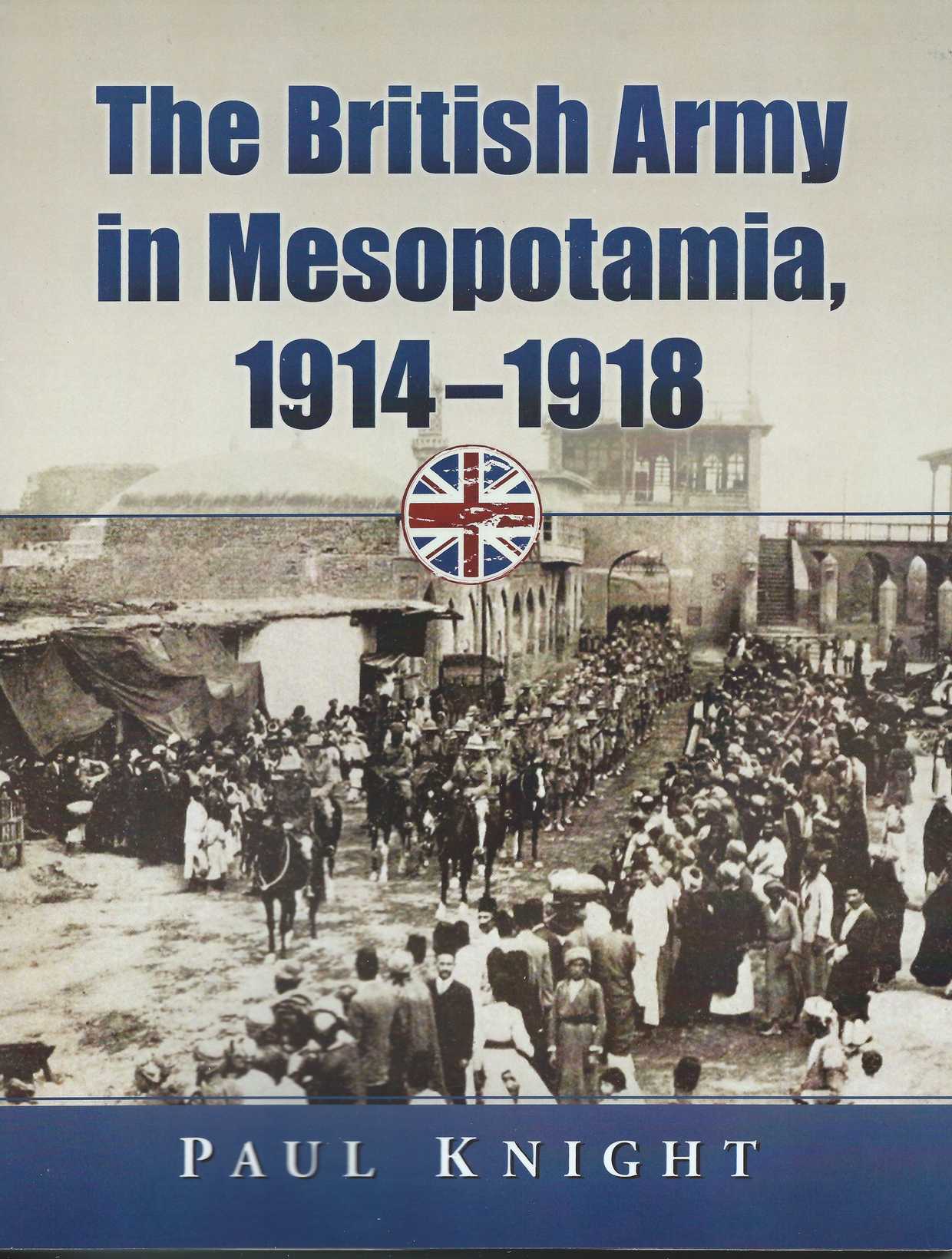
The Siege of Kut is the most famous aspect of this campaign. It was the longest siege in British military history. It was also the greatest British surrender since Yorktown in 1781, and would only be exceeded by Singapore in 1942. Yorktown brought an end to Britain’s American empire, and Singapore brought about the end of the British Empire in the East. It was feared that a surrender at Kut would also bring down Britain’s empire in the East. For that reason, there were many desperate, costly attempts to reach the town fought in horrendous conditions. But either side of Kut were the most successful campaigns of the whole war. The years 1914/15 started with the most successful amphibious landing of the war, the last battle fought without air support, and the most successful advance before 1918, culminating in the Battle of Ctesiphon twelve months later, 500 miles from the sea and just twenty miles short of Baghdad. 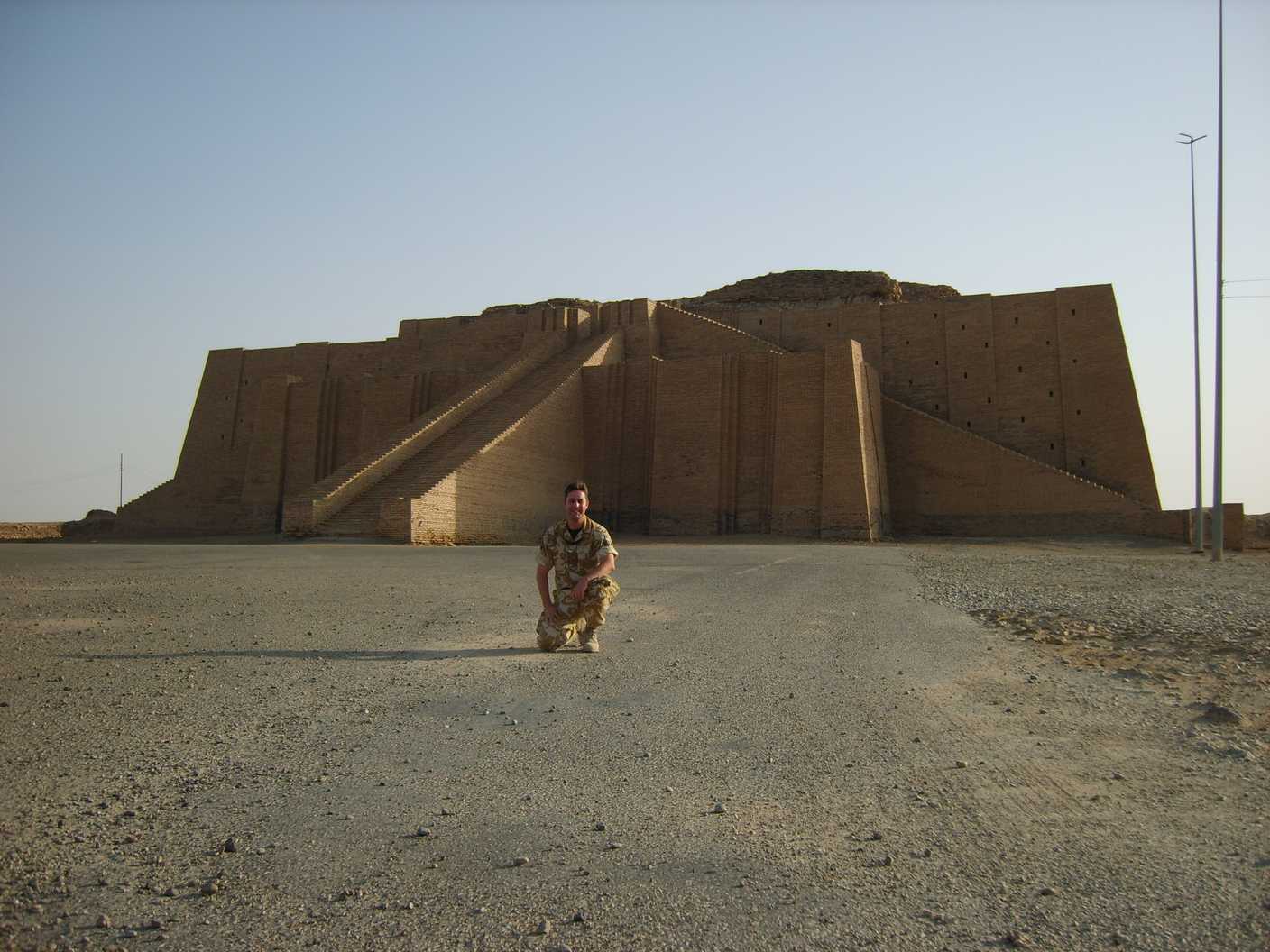
Paul Knight, the author, at Ur of the Chaldees
After the failure at Kut, new generals re-invigorated the army which went on the offensive in December 1916 to capture Baghdad in March 1917. From there, they pursued the Ottomans to borders of modern Iran and Syria, and into Turkey. This contrasts with the progress of the more famous Egyptian Expeditionary Force (EEF). Baghdad was captured between the First and Second Battles of Gaza, while the EEF was still trying to fight its way out of the Sinai (part of Egypt) into the Ottoman Empire. The MEF had no such luck as a safe base behind the Suez Canal – their safe base was India.
Paul Knight is a Major in the Army Reserve Royal Signals. He is currently OC 33 Signal Squadron in Liverpool and SO2 Commemorations at HQ North West, where he has been the WWI Project Officer for the last five years. His twin interests are Mesopotamia and the Lancashire Territorials. He has written four military history books and is a member of the Merseyside Branch of the WFA. He served in Iraq in 2005 and 2007 and studied Arabic in 2006.
Paul has also recently published ‘Lessons from the Mud’. A collection of ‘After Action Reports’ collected immediately following the 55th Divisions two attacks at Third Ypres in 1917. Within four days of these actions – information came straight from the front line about how these 1917 battles were actually fought.
Gertrude Bell
Fluent in Persian and Arabic, Bell worked for the British government in Cairo during WW1. She contributed to the construction of the Iraqi state in 1921, as well as the National Museum of Iraq. She was Gertrude Bell, the Queen of the Desert. Born into an affluent, progressive family, Gertrude Bell lived a life of adventure and intrigue. She defied the expectations of a woman in Victorian England, becoming a world traveller, a skilled mountaineer and an accomplished archaeologist. 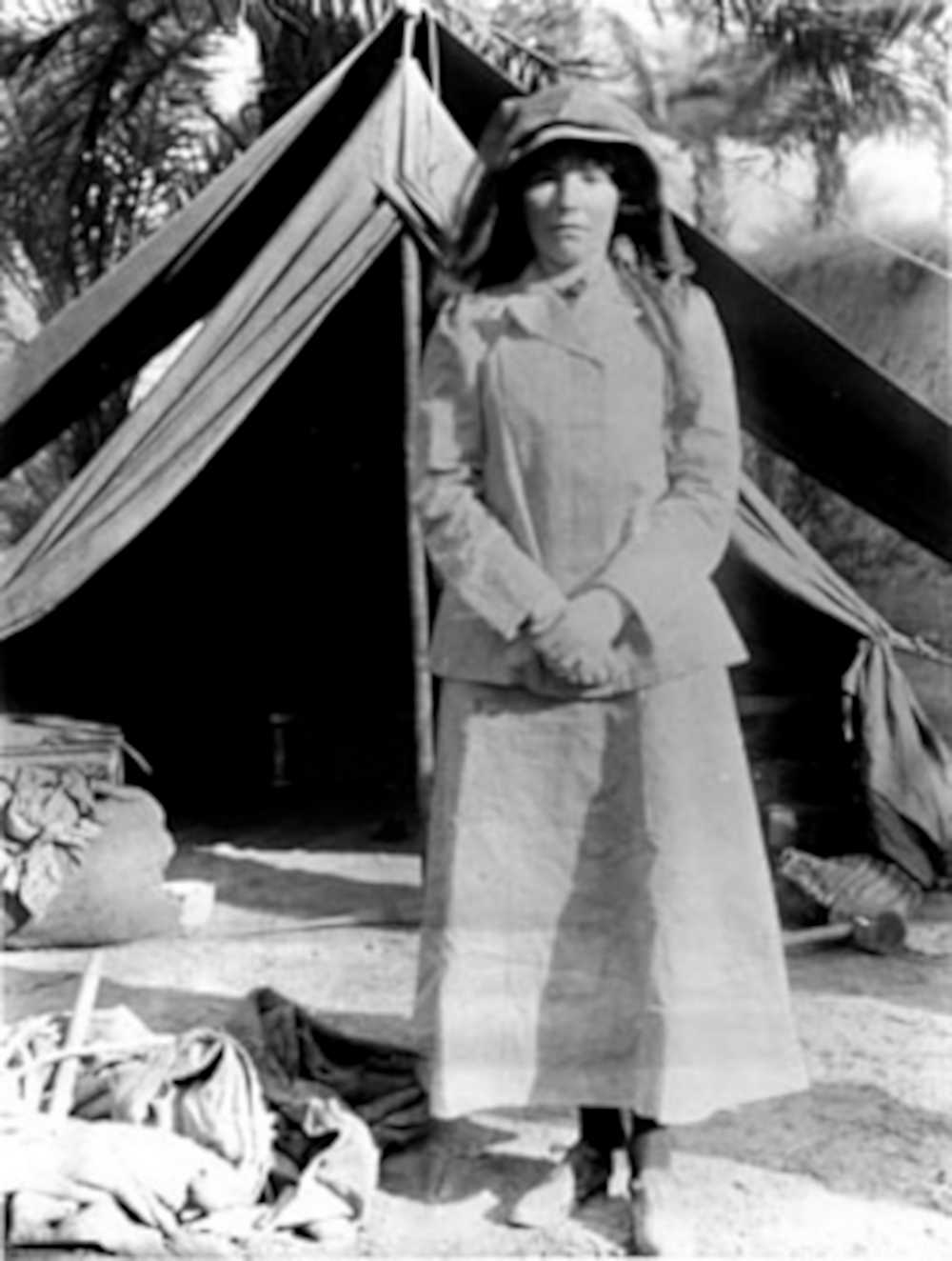
In summer 1914, and the entry of the Ottoman Empire on the side of Germany that November, Bell was swept up with TE Lawrence and other archaeologist-spies into an intelligence operation in Cairo, known as the Arab Bureau. In Iraq, an expeditionary force from India had surrendered to the Turks at Kut al-Amara on the lower Tigris in 1916. Bell travelled to Basra, where a new army was assembling. When Baghdad fell to the reinforcements in 1917, she moved up to the capital and was eventually appointed British High Commissioner, Sir Percy Cox’s oriental secretary, responsible for relations with the Arab population. British policy in the Middle East was in utter confusion.
While the government of India wanted a new imperial possession at the head of the Persian Gulf, London had made extravagant promises of freedom to persuade the Arabs to rise up against the Turks. The compromise, which was bitterly resented in Iraq, was the so-called League of Nations Mandate, granted to Britain in April, 1920. The British Mandate of Mesopotamia was created under the authority of the League of Nations. A British-backed monarchy joining these vilayets into one kingdom, established in 1921 under Faisal I of Iraq. The Hashemite Kingdom of Iraq gained independence from the UK in 1932.
The new Colonial Secretary, Winston Churchill, decided a new administration was needed in Iraq as well as the British colonies in the Middle East so called for a large conference in Cairo. The region between the Tigris and Euphrates rivers, historically known as Mesopotamia, is often referred to as the cradle of civilisation. It was here that mankind first began to read, write, create laws and live in cities under an organised government notably Uruk, from which “Iraq” is derived. The exonym Persia was the official name of Iran in the Western world before March 1935, but the Iranian people inside their country since the time of Zoroaster (probably circa 1000 BC), or even before, have called their country Arya, Iran, Iranshahr, Iranzamin (Land of Iran) and Aryānām. She was an archaeologist, a linguist and the greatest woman mountaineer of her age. And in Baghdad in 1921 she drew the boundaries of the country that became Iraq.
Reference: James Buchan on the extraordinary life of Gertrude Bell.
Malcolm Maginn
Last month’s speaker
The Branch welcomed Sir Hew Strachan, a patron of the WFA and was treated to an absorbing presentation on how and why the antagonists fared and the reasons for the end of the war. In 1914 the balance of resources suggested that the Allies (France; Britain {and Empire}; Belgium; Japan and Russia) should win in short order. The Allies’ manpower was 150 million compared to the Central Powers’ 130 million. (Germany and Austria-Hungary). However, much of the former was spread worldwide often with little military strength or experience (such as Africa). Britain was now the third world economic power behind the USA and Germany but London was still the world financial capital and Britain had the most powerful navy.
During the war, the Allies were increased by Japan, Italy, Romania, Greece, Brazil and the USA. Only the Ottomans and Bulgaria joined the enemy later. The strategy for the Central Powers was to try to win a quick victory before the enemy states could combine effectively. The aim of the Allies was to bring pressure on the Central Powers to offset their benefits of internal lines. Thus the main question was could the Central Powers win before their enemies could harness their numerical advantage and industrial power. How could the Germans and its supporting nations win before the Allies could coordinate its resources and overwhelm them?
Germany had no real sea power compared to its land power and the only other way to hit back was by submarine warfare. This meant however that Germany could not trade with the then neutral USA. The difficulties of organising co-ordinated assaults and lines of supply were shown at Gallipoli, where even the British sea power was unable to effectively beat the Turkish forces who were spurred on by defending their homeland.
In 1916, the Allies wanted to make a concerted effort on land. As they were fighting on exterior lines they would have to attack on all fronts to weaken the advantage of interior lines of communication held by the Central Powers. The Somme committed the British and French, but it was difficult to harness the other partners such as Italy and Russia. The difficulty of co-ordination meant that the assaults in 1916 did not bring the Allies the success for which they had hoped. For the Germans, although they had a string of land successes, they were never enough to give them an ultimate victory. Increasingly Germany realised that the USA would continue to allow supplies to sail to the Allies, so there was little option but to continue with the submarine assault. As the war progressed and the German submarine attacks continued, the USA would finally commit themselves to the Allied cause in 1917 which offset the removal of Russia. As Germany was unable to trade with the USA, it saw no reason to dilute its submarine war campaign in order to deny the Allies the material and foodstuff that was coming across the Atlantic.
In 1917, the continual submarine attacks and the leaking of the Zimmerman Telegram by British Intelligence had an adverse effect on the Central Powers’ relationship with the USA. The German message had promised to help Mexico regain lost territory from the USA. If the USA declared war on Germany, then provided Mexico took action, Germany would help it recover land lost to the USA. It was an obvious non-starter. This further cemented the USA’s help to the Allies in financing their cause. This failure along with the submarine offensive was another spur to force the USA into military action.
However, in 1917 the Allies had their failures. The Nivelle Offensive in the spring of 1917 not only failed but also saw many French units refuse to embark on useless attacks and the British saw morale sag in the mud of Third Ypres. Fortunately in the spring the USA had finally reacted to submarine warfare by declaring war on Germany. For Britain, the only success had been the capture of Jerusalem in December. The Allies also realised that the fall of Russia and its Revolution would allow many of the German units to be transferred to the west. Both the Allies and Germany realised the importance of future American involvement. Germany had to use its short term advantage to use extra units from the east to force a result in the west. Britain was experiencing manpower problems. The Allies believed that they could win by 1919 when 4 Million USA soldiers would be in Europe. Although the all-out submarine policy would affect the Atlantic convoys, it was never enough to win a complete victory. The USA was able to supply the Allies with material that the Central Powers could not duplicate. It would not be long before that would include a massive influx of manpower.
For Germany there was one last chance to win in the west and at the minimum obtain a peace settlement. However, all this time the British blockade was wearing down the effectiveness of the German economic and industrial potential as well as starving many of its citizens. Thus 1918 would be a critical year. Early in the year, the Marquess of Lansdowne publicly aired his views that the war was unsustainable and there should be a peaceful settlement with Germany. However, it was widely condemned as unworkable with the belligerent enemy. (The historian Fritz Fischer related that the Germans would never have agreed to its proposals).
The Allies were aware that in 1918 the Germans would have to attempt to win in the west. Having nullified Russia, this was their only hope. This would be a fait accompli before the USA was able to harness its enormous manpower and industrial potential. Lloyd George had misled Parliament by informing them that huge numbers had been sent to France and Belgium when in fact the total had been swelled by non-combatants including foreign labourers and other non-combat ranks. Thus, the Germans embarked on the Spring Offensive. Its initial results seemed spectacular but most of the land gained was open fields of no strategic value. Ludendorff consistently switched his goals and his elite troops were gradually whittled down without gaining any important areas. The vast quantities of abandoned food, drink and materials informed the enemy soldiers that the submarine offensive had not been punishing the British, unlike the blockade which was crippling the war effort and starving the home population in Germany. Nevertheless, the British Army aimed to raise morale in the troops by explaining what exactly its aims were. The French Army was a worry, but their leaders made conditions better by more leave and rotation. Fortunately the decision to appoint Foch as supremo bound the Allies and they were to stem the tide and plan for a final push eastwards. Foch, acceptable to all the Allied leaders, was able to co-ordinate the Allies’ resources and resist the temptation to counter attack before the British (and Empire), French and the ever increasing Americans were ready. The allied attacks were sharp and brutal and were not continued beyond a realistic goal. Successive attacks after short breaks with clear objectives kept the numerically decreasing enemy on the run and constantly having to move reserves up and down the line without offering much resistance. The speed of the German collapse caused the terms of the Armistice to be a military solution and was to cause friction at the subsequent Versailles assembly. The terms imposed on Germany were eventually come back to haunt the Allies. As Foch said, it was not an end, merely an armistice for 20 years. This was an excellent talk. It brought together all the factors at play in the lead up to the end of the hostilities.
Terry Jackson
The Browns of Buxton
When one thinks of Buxton and the Great War one would probably associate it with Vera Britain and ‘Testament of Youth’. On a recent visit, Ann and I attended a concert by the Northern Chamber Orchestra in St John the Baptist Church, Buxton. Whilst there I noticed on the internal main wall memorials for two brothers William (Leonard, by which name he was known) Brown and Cecil Arthur Brown, killed in World War One. However. Leonard died on 25 September 1915, not the day after as shown on the memorial. He was also still a 2nd Lieutenant not a Lieutenant as shown. Cecil died on 23 April 1917. The 1901 and 1911 census show Leonard was born on 29 September 1891 and Cecil 29 October 1893. They lived at 20 Hardwick Street, Buxton. Their parents were Major Abraham Brown, a solicitor and their mother Lucie (née Lowe). They had two elder sisters Constance and Elsie Marie. By 1911 they had two live-in servants. Leonard was educated at Homeleigh School in Buxton and Shrewsbury. He was an articled clerk at his father’s practice and became a solicitor.
Cecil was similarly educated and was an engineer at Vickers of Sheffield. He was an all-round sportsman and played cricket for Buxton. Leonard enlisted in October 1914. In July 1915, he was a 2nd Lieutenant in The Sherwood Foresters in France and Brigade Intelligence Officer. He was killed in one of the second line trenches. His commanding officer indicated it was probably by a sniper. Leonard is buried in Reninghelst New Military Cemetery. This was in use from the autumn of 1914 and the extension from November 1915 until the Armistice. It was suitably placed for a field hospital. Cecil originally enlisted as a Private in the Royal Fusiliers before gaining a Commission as a 2nd Lieutenant 2/6th Battalion, The Sherwood Foresters on 5 October 1914, later being promoted to Lieutenant 22 March 1915 (London Gazette 12 June 1917).
He entered France on 11 July 1915 and joined 1/6th Battalion at Sanctuary Wood on 7-8 August 1915. On 5 May 1917 the ‘Buxton Advertiser’ published a letter from his Commanding Officer, Lt. Col C. B. Johnson to Cecil’s father, Major Abraham Brown, Lt. Col. Johnson who wrote:
“24 April 1917 - My dear Major, I am most awfully sorry to tell you that Cecil is both wounded and missing. ‘C’ Company made an attack and Cecil and his platoon were hung up by a wall with wire entanglement behind it. Cecil, with the utmost pluck and gallantry, began to climb the wall but was hit and fell down behind it. A few of his men got over but the rest had to withdraw. We sent out search parties after dark but we did not find him; and we were relieved the same night. I asked the Company who relieved me to make every effort to bring Cecil in, but it is possible he had been made a prisoner as our attack had failed. I haven’t had any news of him so far, this all happened on the early morning of 23 April. I am hoping myself that he is fairly all right and will be brought in, but we’re all very anxious for news. Everyone is devoted to Cecil; he is one of the best fellows I’ve ever met in my life, and the men will do anything for him. I will send you any more news as soon as I can.”
A few weeks later, on 17th July 1917 the ‘Buxton Advertiser’ officially confirmed Cecil’s death, killed in action on 23rd April. He was recommended for the Military Cross for gallant and distinguished service in the field. A battalion war diary entry recounted Cecil’s actions which led to the receipt of his MC:
“For conspicuous gallantry and devotion in the attack on Fosse 3 de Lievin on 23rd April: Previous to zero hour this Officer’s platoon came under heavy hostile artillery fire in spite of which Lt. Brown continued to go around his sections, encouraging the men and so imbued them with his own splendid spirit of cheerfulness that when the attack commenced they crossed one road heavily enfiladed by the enemy M.G. fire, followed him through a gap in the enemy wire and in spite of losing half their effectives, scaled a high wall under heavy M.G. fire from the fosse and were only stopped by hidden wire, the existence of which had not previously been known. Lt. Brown was himself badly wounded in scaling the wall but though unable to speak on account of his wounds, he continued to wave his men on. Lt Brown is still missing as it was impossible to get to him by day, and search parties sent out at night have so far been unable to find him. He is believed killed.”
Cecil is buried in La Chaudiere Military cemetery, initially known as Vimy no. 1, at the foot of a ridge by a camouflaged German gun in a house. It was small until 1919 when several cemeteries were cleared into it. It is assumed his body must have been subsequently found. Cecil’s Medal Index Card shows that originally he enlisted as a Private in the Royal Fusiliers before gaining a Commission as a 2nd Lieutenant 2/6th Battalion The Sherwood Foresters on 5th October 1914, later being promoted to Lieutenant 22nd March 1915 (London Gazette 12th June 1917). He entered France on 11th July 1915 and joined 1/6th Battalion at Sanctuary Wood on 7th-8th August 1915.
These were two brave brothers and their deaths must have affected the family. The only sad thing about their memorials is that due to refurbishment, they can only be seen by gaining access to a uni-sex wc (photo below).
Terry Jackson
(Primary source-‘More than just a name-Buxton war memorial’)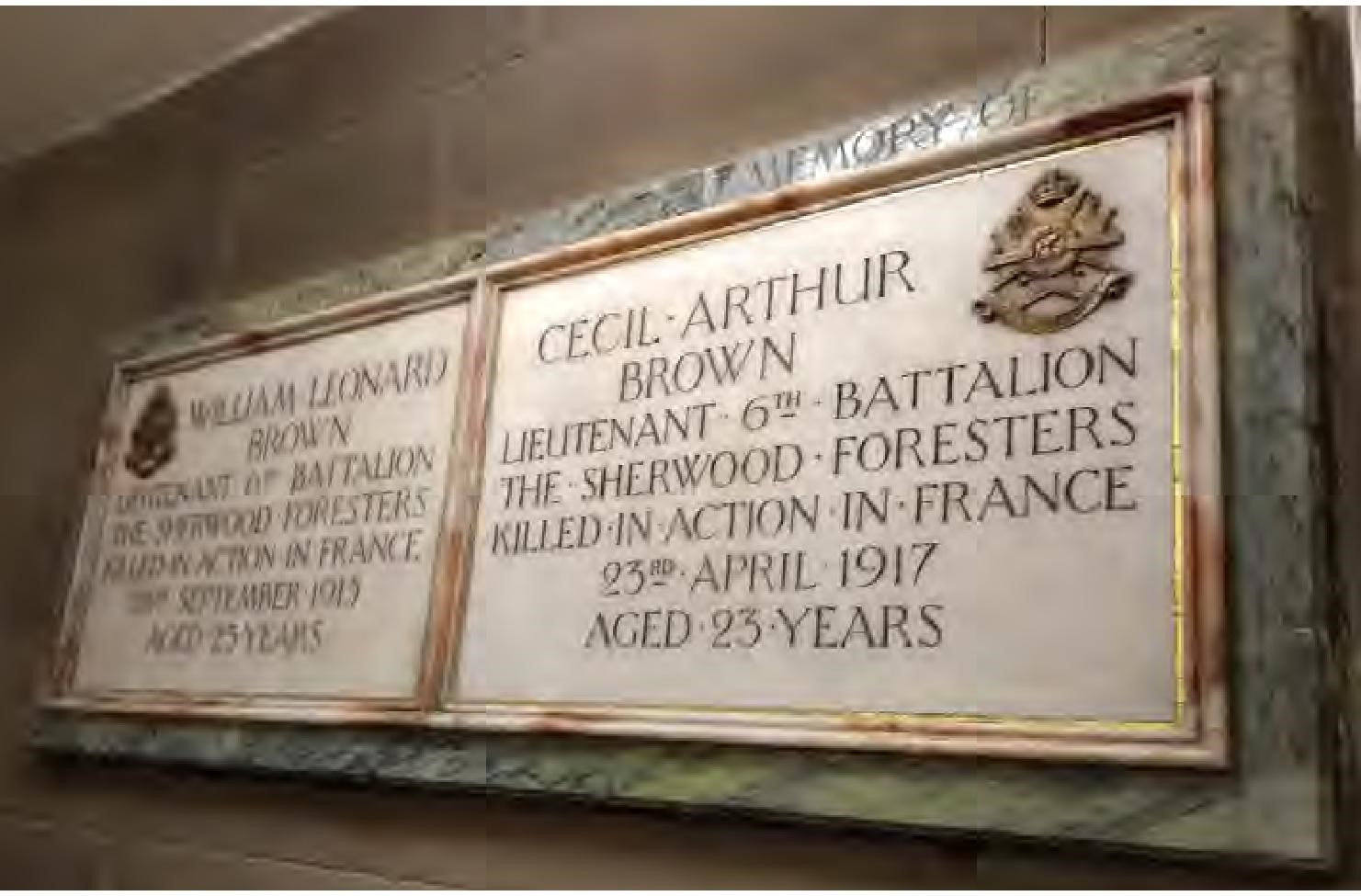
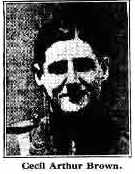
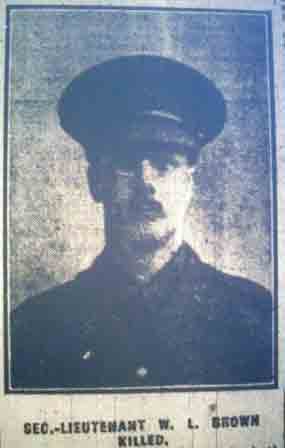
From “The Times” 8th June 1919 Reprinted in “The Times” 8th June 2019
The City of the Salient
We published on Friday a letter from an “Ypres Veteran”, who wrote to enlist our support “in preserving Ypres from the vandalism which is threatening it, a vandalism almost vying with that inflicted by the guns of the enemy? He tells us that “profit-hunting outsiders, often from far afield,” have “bought for a song small parcels of land upon which to erect huts, booths, and estaminets, even in the Grand Place itself”. The result is a “tendency to make Ypres a sort of second-rate country fair”.
The protest is timely, and, we hope, in time. We agree with it unreservedly, and emphasise it because this type of degradation flourishes by imperceptible degrees till it is irreparable. That must not happen to Ypres, nor yet to Louvain, where rebuilding without taste is already noticeable. Ypres especially, the City of the Salient, must be preserved from the blight of reckless commercialism. Its military glories we need not celebrate afresh. Apart from the pitched battles to which it gave its name, it has associations among the most noble of the war, for the holding of the salient was one of those feats of arms — l hardly justified perhaps in the strict military sense — that show armies as the embodiment of great ideals. The salient, secure against every German assault, shone before the world as the symbol of Belgium, beaten to her knees but unconquerable; and as more than that, for Belgium herself became, and remains, a symbol of the sure triumph of the spiritual over the material.
The “British authorities, “Ypres Veteran” tells us, have stayed work on some of the unworthy erections defacing Ypres, in the hope of the land being expropriated by the Belgian Government”; but meanwhile some of the buildings which are the outcome of the British occupation are themselves an eyesore. King Albert and most enlightened Belgians are dismayed by this vulgarisation. Let them act at once, and be sure that they will have the most eager support from this country and the Dominions. Since 1914 Ypres has become one of the places which the world venerates — to which it goes on pilgrimage. Even commercialism would condemn its desecration. The Germans “ploughed upon its back and made to long furrows”. These honourable scars reverence must preserve.
Future Meetings
12 July Operation REFLECT: What the modern British Army learned from the First World War by WFA Vice President, Maj Gen. (Retd) Mungo Melvin
9 August The Great War Aftermath by John Derry
13 September The Last Battle: End Game on the Western Front, 1918 by Peter Hart
Copy, Word docs, pictures, jpegs, etc. by 5th July please to Ralph Lomas, Tel: 01625 511645 (work) Email:
